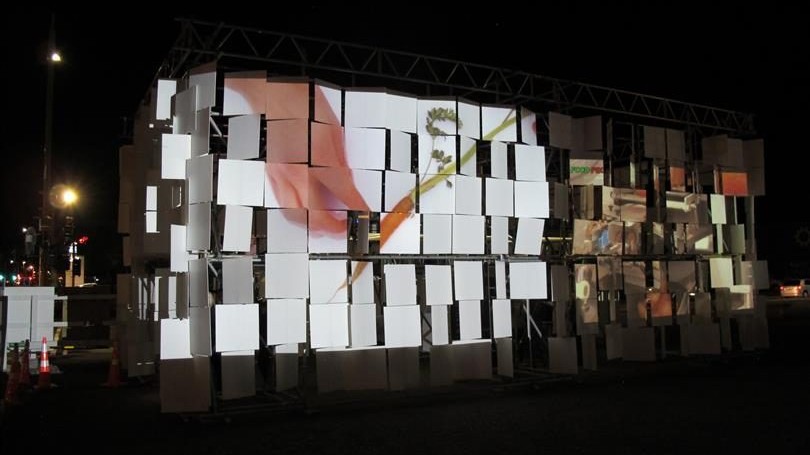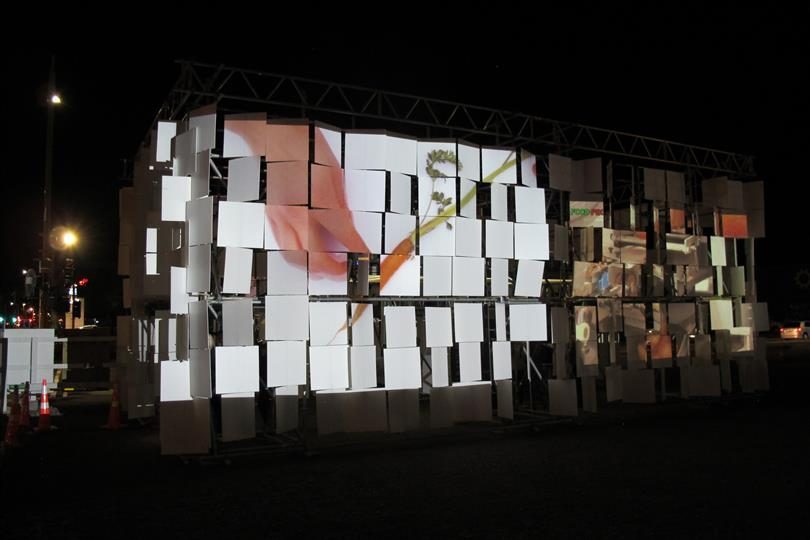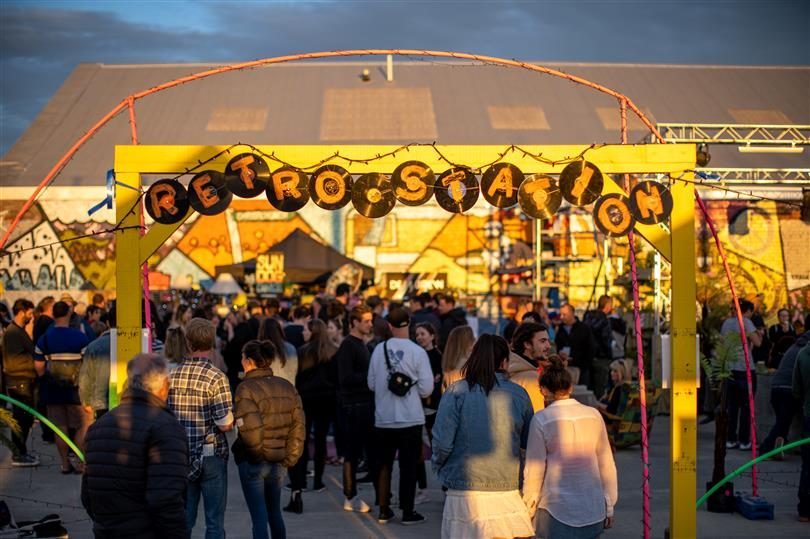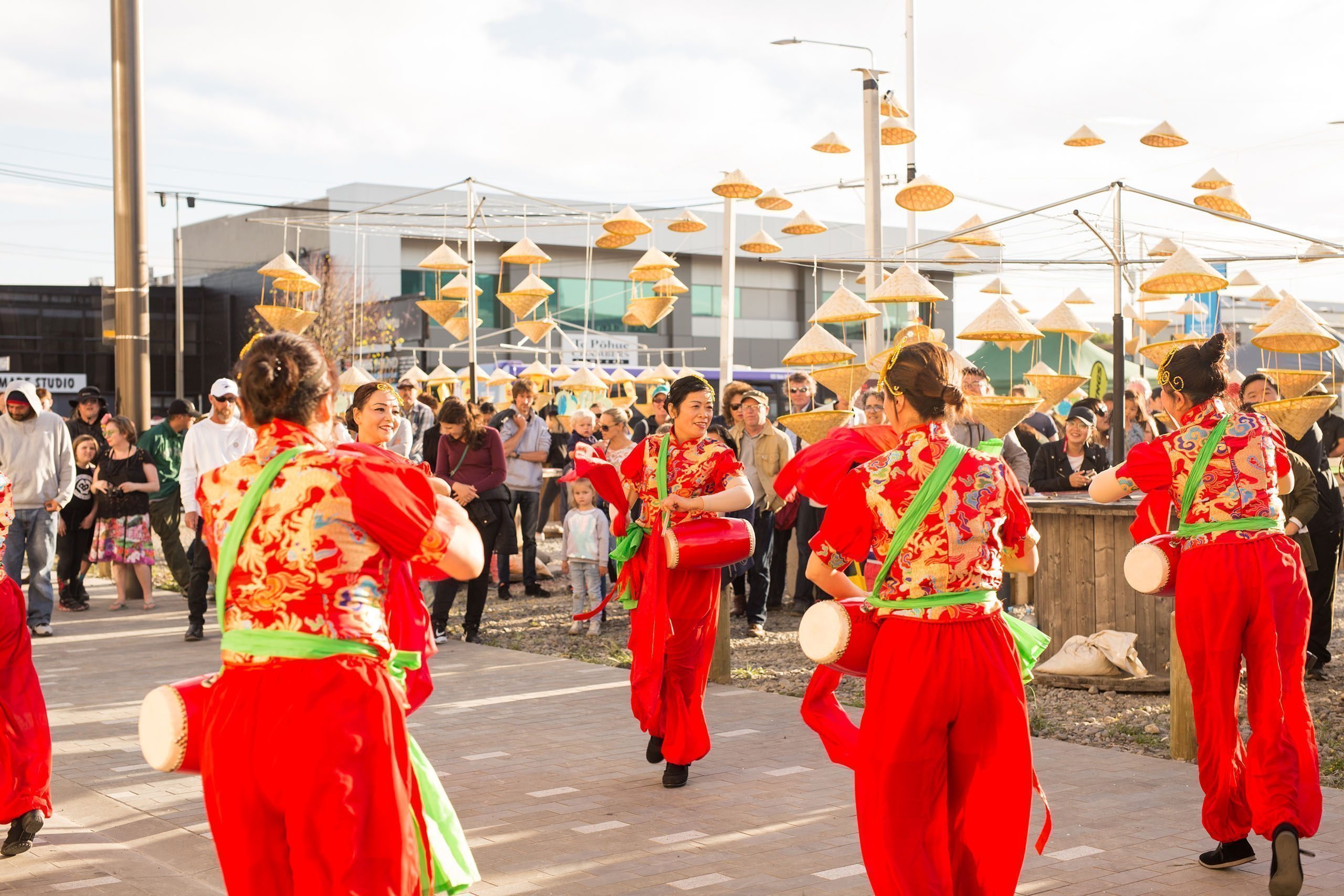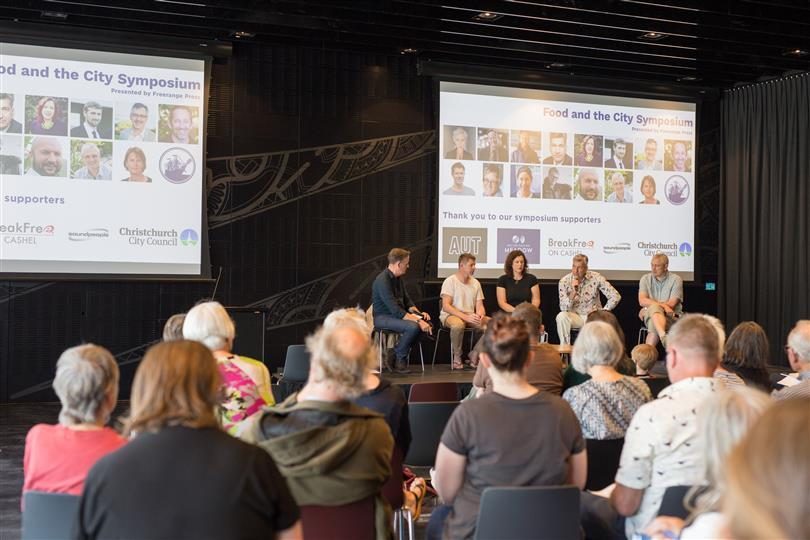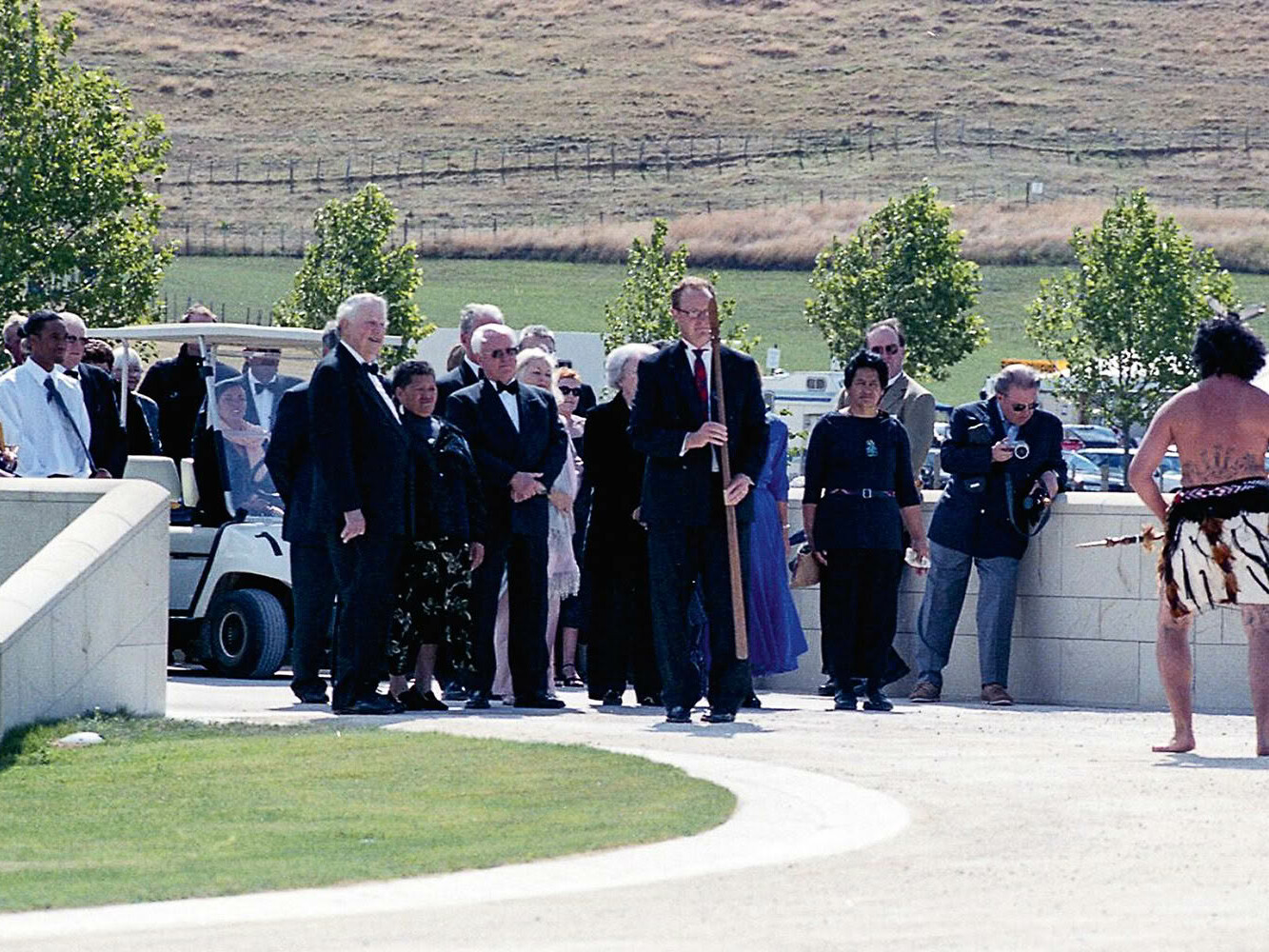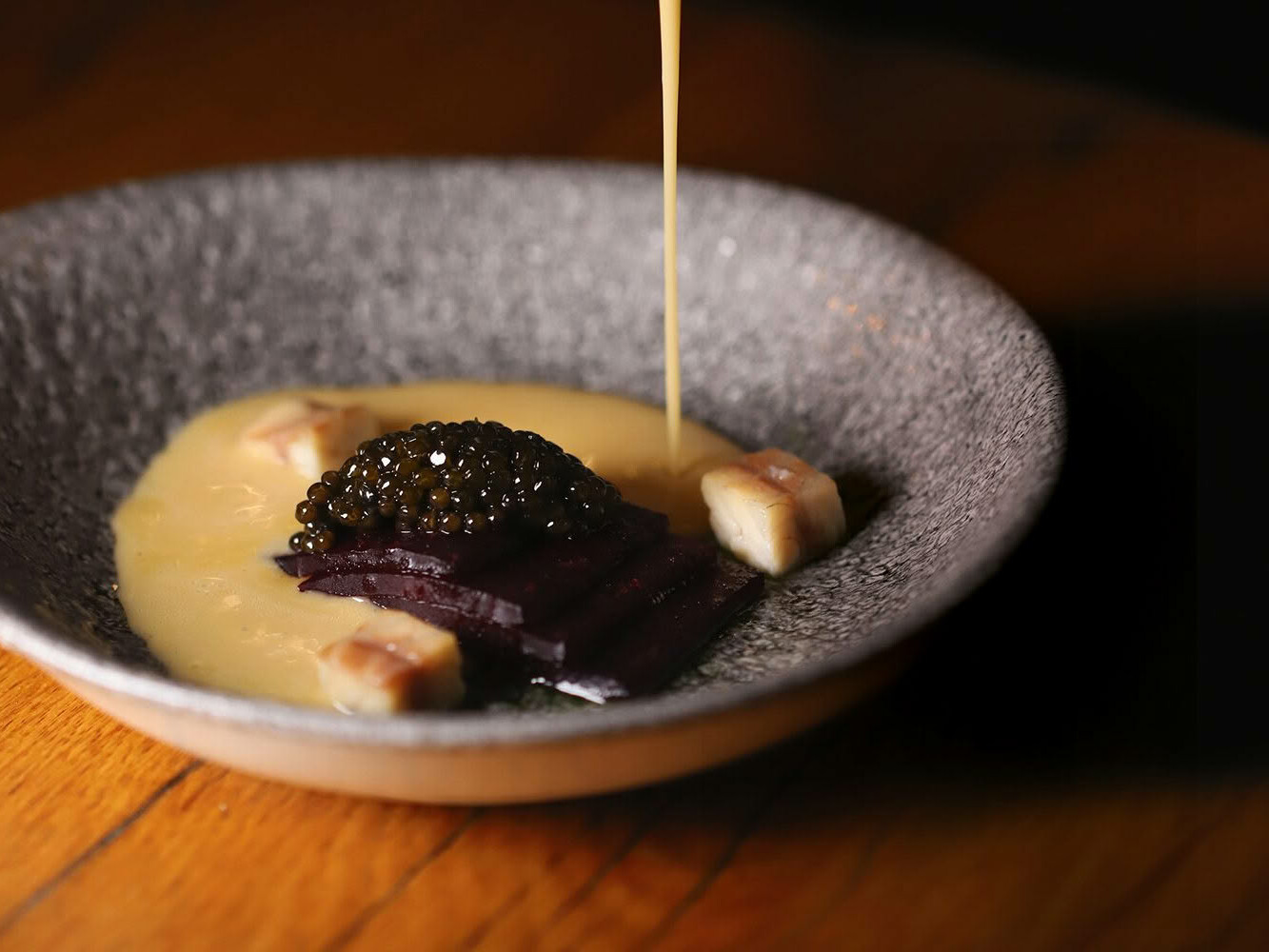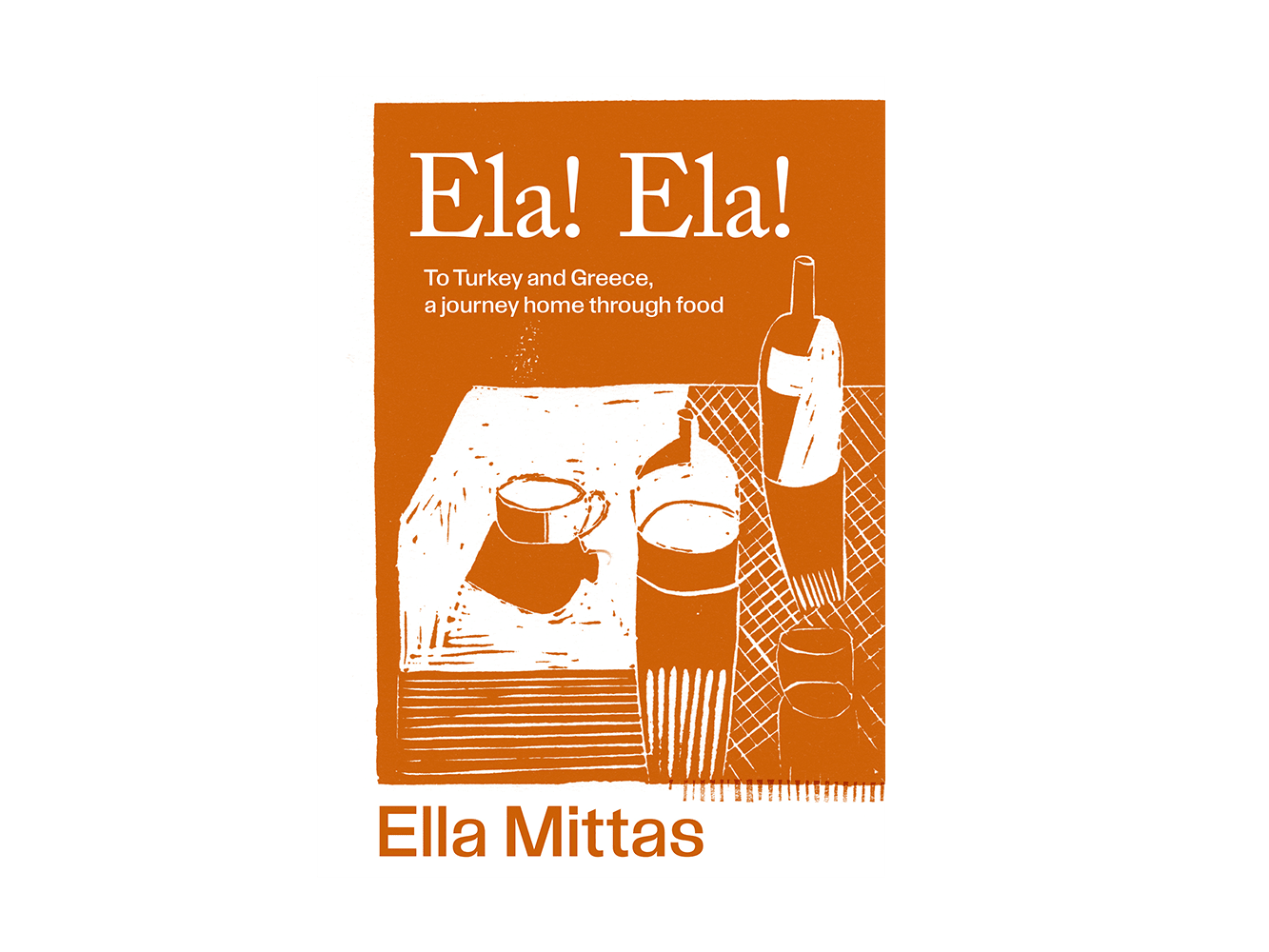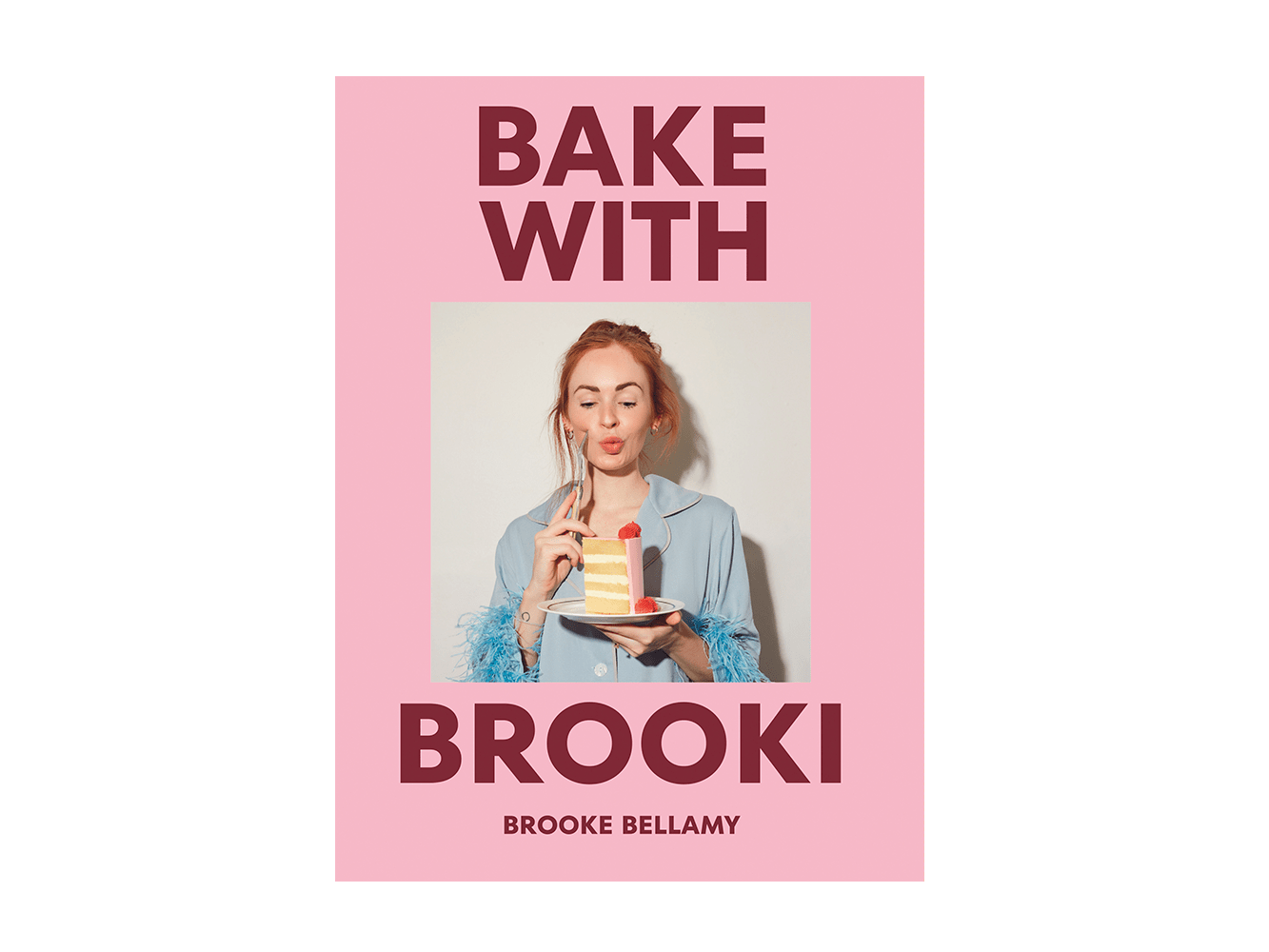How food shapes our spaces, practices and urban fabric – Emma Johnson reports in for FESTA.
Photo: FESTA’s headline event FEASTA!: Sounds Like Dinner, an installation from the NZIA exploring the future of food. Image by Douglas Horrell.
There has been a lot of talk about New Zealand food stories recently. About the connective power of food and its potential to foster a deeper sense of place and identity. But how do we tell these stories and who gets to tell them? And what of the ‘doing’ part of food – the sharing, growing, eating, transporting – and its immediate role in our lived experience?
Everyone eats; most of us cook; some of us grow food. Food is personal, but it is also serves a public role. As food weaves together people and places it comes into contact with a multitude of spheres, from health and politics through to waste, transport, culture and equality. And because it does so, it is filled with such promise in terms of impacts and reach. Though particular in their individual expressions and interactions, everyone understands and experiences food.
For all of these reasons, the focus of this year’s FESTA – the vibrant biennial Labour Weekend celebration of urban creativity in Christchurch – was the role of food in our cities. Furthermore, as each FESTA responds to the context of the city’s rebuild through a chosen theme, it highlighted the increasing number of ways to engage with the city through food, explored how it can express our sense of place and brought people back into Christchurch’s heart for a positive experience.
Like the development of most urban spaces, which arose from surpluses and the ability to store and tax food, Ōtautahi has food at its foundation. Christchurch’s centre has long been a place for trading and exchanging goods and kai, and for mahinga kai (the gathering of food and other resources, as well as the places those resources are gathered).
Post-quake, food is still shaping our spaces, practices and urban fabric. Community gardens, farmers’ markets, urban farms and hospitality venues have provided people with places to gather. Ngāi Tahu and mana whenua values have been expressed in the rebuild through practices such as the enhancement of environmental conditions necessary for the rehabilitation of mahinga kai sites. We are generally more aware of the complex systems – ecological or otherwise – supporting the presence of food in our city and the ways we interact with it.
At FESTA, thanks to the many collaborators involved (from Jade Temepara of Kākano to the Kairos Free Store), there were more than 50 diverse ways to experience the interconnections between the city and food. Offerings included workshops on mahinga kai food sovereignty and its contemporary relevance, an exhibition of edible plant specimens collected on Captain Cook’s first voyage to New Zealand; an evening walk through central Christchurch and its hospitality history; a workshop on micro and vertical farming; a communal dinner at a community hub; Cultivate Urban Farm’s massive seedling sale. And thousands of people coming together around food for a night of celebration in a new public space.
Food provides an invitation: it is welcoming and ingrained in our notion of hospitality. The power of this was demonstrated at the headline event, FEASTA!, a vibrant celebration of food and community, where 12,000-14,000 people came back into the central city on a Saturday night. This collective expression of, and desire for, manaakitanga and whanuangtanga involved the transformation of a city block with 17 artistic and architectural installations, designed and fabricated by students from across Australasia, as well as professionals. These explored themes from The Future of Food through to Public Feasting, and the spaces they created were activated with performance, music, activities, as well as lots of great things to eat and drink.
FEASTA! not only provided hospitality, it also invited the wider public to participate in a collective reimagining of our spaces and practices. For example, the UTS studio’s Cottage Connection highlighted how people experienced the city through food – samples of edible products by small-scale producers were collected and displayed as artefacts, and available to exchange for an oral history (420 were gathered). Artist collaboration Kono for Kai invited the exchange of a koha of kai for kono (hand-woven food baskets, complete with native seedlings), with koha collected going to Rehua Marae Social Services. Biodiversity Beacons dotted the site and asked how we can design to provide food of other species.
A more in-depth examination of the challenges relating to food and the potential for its positive impacts took place during Freerange Press’s symposium, hosted by Simon Wilson. A Death Café provided participants with the comfort of cake and coffee, and a space to talk about a difficult subject. The closing night event presented by our community partner Food Resilience Network comprised a night of movie screenings in the Botanic gardens, complete with snacks grown by the Canterbury Community Gardens Association.
FESTA 2018 connected people through collaborations and hoped to support the relevant food communities of this place, whether they are involved in the practices of gathering or growing food, or dealing with its waste and insecurity.
So where to from here for food and this particular city?
Maybe food, and all that gathers around it, will help us to work through questions about our how our city functions, as well as its story. Creative Director Barnaby Bennett recently wrote that “Culturally the city seems unsure of its identity: British city or new post-colonial urbanism? Garden city or city of gardening? Economic farming hub or creative and cultural centre? Suburban lifestyle or urban living?” City of gardening sounds good to me. But for food to fulfil its potential, it is going to take a lot of doing by a lot of people. It’s as much about our shared practices as it is about our stories.
SEE MORE FROM CUISINE
Suculent where the sauce is the soul
As in any thriving city, hotspots come and go and with so much to…

